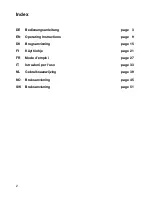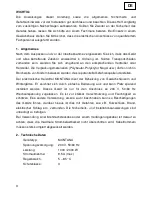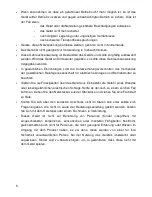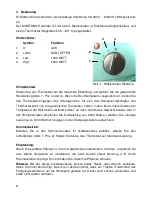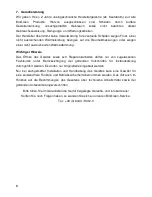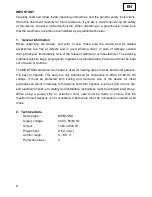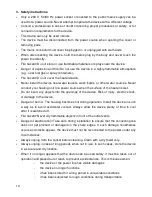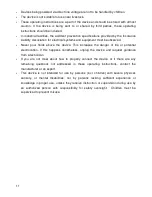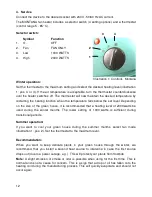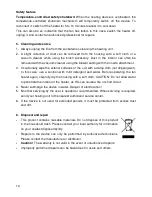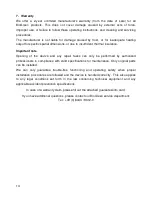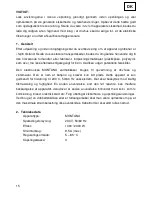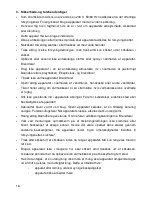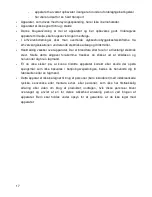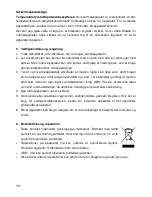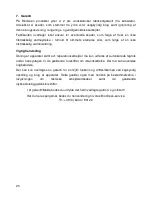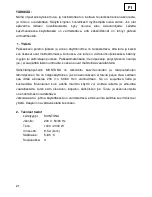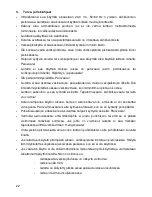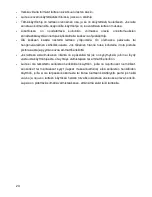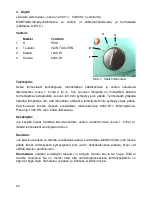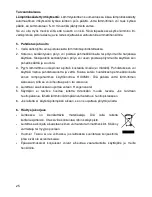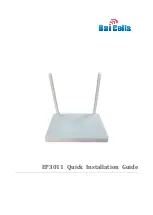
10
3. Safety instructions
•
Only a 230 V, 50/60 Hz power socket connected to the public mains supply can be
used for a power source. Never attempt to operate the device with a different voltage.
•
Consult a professional in case of doubt concerning proper procedures or safety, or for
connection requirements for the device.
•
This device can only be used indoors.
•
The device must be disconnected from the power source when opening the cover or
removing parts.
•
The mains connector must never be plugged in or unplugged with wet hands.
•
When disconnecting the device, hold the mains plug by the body and never touch the
power line directly.
•
Fire hazard! Do not store or use flammable materials or sprays near the device.
•
Danger of explosion and fire! Do not use the device in a highly-flammable atmosphere
(e.g., near fuel gas or spray containers).
•
Fire hazard! Do not cover the heater device.
•
Never install the device near water faucets, wash bowls, or other water sources.
Never
connect your heating unit to a power source when the surface of the heater is wet.
•
Do not insert any objects into the openings of the device. Risk of injury, electric shock,
or damage to the device.
•
Danger of burns! The housing becomes hot during operation. Install the device in such
a way as to avoid accidental contact. Always allow the device plenty of time to cool
after it is switched off.
•
Fire hazard! Never dry flammable objects in front of the outlet vents.
•
Danger of electrocution! Take care during installation to ensure that the connecting line
does not get pinched or damaged on the sharp edges. If such damage nonetheless
occurs and cracks appear, the device must not be reconnected to the power under any
circumstances.
•
Always unplug from the socket before cleaning. Clean with a dry towel only.
•
Always unplug in case of long periods when not in use. In such cases, store the device
in a secure and dry location.
•
When it no longer appears that the device can be used safely, it must be taken out of
operation and placed out of reach to prevent accidental use. This is the case when:
-
the device or the power line has visible damages
-
the device no longer functions
-
it has been stored for a long period in unfavorable conditions
-
it has been subjected to rough conditions during transportation


